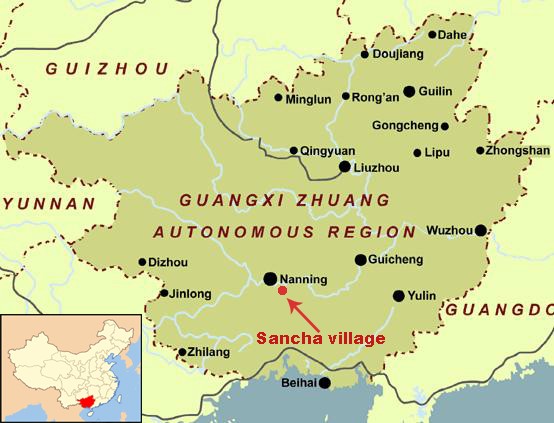Motivations and aims of the study
Family farming is the primary and most widespread form of agricultural production in developing countries today. According to the FAO’s World Census of Agriculture, China has close to 200 million small farms, with an average farm size under 0.5 hectares (HLPE 2013). They represent about 35% of all farms in the world, cover about 10% of the worldwide agricultural land and produce 20% of all food in the world. They thus play an important role in the world food security and rural livelihood (Lowder at al. 2017). However, because of rapid urbanization, off-farm employment opportunities and land regime reform in favor of large-scale agricultural firms, family farming is declining, which has raised great concerns about the sustainability of China’s agricultural system. Family farming has potential benefits in terms of environmental conservation, natural resources and biodiversity, and be also more productive per unit area than large-scale industrial farming playing a critical role in overall food security (Fan and Chan-Kang, 2005 among others).
Consequently, since 2013, the Chinese government has officially recognized the importance of family farming and has clearly supported it in its “Number One Policy document” (The “Number One document” focuses on what the Central Committee and the State Council view as the most important topics for the year). The question now is how to revive millions of family farms and promote an effective transition toward sustainable agriculture. While top–down policy interventions exist, some alternative bottom–up initiatives that rely on smallholder farmer participatory field trials have emerged to promote sustainable agricultural techniques among family farms (Godtland et al., 2004). These initiatives aim to adapt new techniques to local conditions and then to diffuse the benefits/results of successful experiences via social interactions among farmers (Pretty, 1995).
With this in mind and from a well-founded contextual background, our study tests the yield impact of social interactions in paddy rice production. We define these interactions as the linkages of farmers’ agricultural rice yield via exchange of agricultural knowledge and practices, and the presence of input spillovers within
eight social and spatial groups in a small Chinese village called Sancha and located in the mountainous zone of China’s Guangxi Zhuang Autonomous region (see Map below).

Contribution of the study to the literature
Our study contributes to the growing literature that uses individual-level data to measure the quantitative importance of social interaction. First, to our knowledge, we are unique in focusing on agricultural yield (In the literature, some evidence has been found that peers can be an important mechanism in rural economies for disseminating information about credit access, labor markets, risk-sharing, agricultural revenues, sales revenues and new technologies in terms of input profitability, input use/adoption, land allocation and demand for new technology). In China, yield may vary greatly among farmers. The differential access to information through social interactions may explain this variation in yield among farmers even after controlling for factors including individual and neighbours’ input use (labor, land, capital, fertilizers and so forth), technology adoption (organic versus conventional) and other agro-climatic factors.
Our second contribution is the use of a methodology carefully formulated and readily applicable to other studies of social interactions. This methodology relies on the use of the Spatial Durbin Model, derived from spatial econometrics, to disentangle
social interaction effect from
spatial spillover effects from plot-level panel data (collected for five crop seasons between 2008 and 2010 over 198 plots) on paddy rice production. Our strategy allows controlling for characteristics of nearby plots and for spatially correlated omitted variables through plot-fixed effects and crop-season dummies. We also take into account technological heterogeneities present in the study, which is composed of both organic and conventional rice farming, and correct for potential bias due to the self–selection in organic farming practices.
Results of the study
Once we have controlled for spillover effects and correlated effects, we find a
robust negative social interaction effect. A one percent increase in the yield of a farmer’s neighbouring plots leads to a decrease between 0.30 and 0.58 percent (according to the specification) in the yield of the farmer’s plot. The limited and/or flawed information shared by farmers via their interactions may explain this result. In a complex environment of mixed technologies (organic versus conventional) and economic competition, farmers’ strategic behaviors may exist to impede the transfer of full information and good practices.
Results on the effects of input spillovers are mixed. We find positive spillover effects of some inputs such as labor, capital, water and organic pesticides, which suggests that farmers may share these inputs with peers in the same group. On the other hand, external nutrients (nitrogen and phosphate) have negative spillover effects. An overuse of these inputs or farmers’ coordination in nutrients application may explain these results. The precise mechanism calls for further investigation, which we will leave for future study.
To conclude, recognizing the constraints of social interactions and the presence of spillover effects, we suggest more guidance and training of smallholder farmers from agricultural extension services. In China, the system of extension services has almost collapsed because of public finance constraints. However, these public services are fundamental and indispensable for the transfer of new technologies and performance improvement. A combination of public services and social interactions among farmers may be more appropriate to induce family farms to move collectively toward sustainable agriculture.
Bibliography
Godtland, E. M., Sadoulet, E., de Janvry, A., Murgai, R. & Ortiz, O. (2004).
The impact of farmer field schools on knowledge and productivity: A study of potato farmers in the Peruvian Andes, Economic Development and Cultural Change, 53 (1), 63-92.
HLPE. (2013). Investing in smallholder agriculture for food security.
A report by the High Level Panel of Experts on Food Security and Nutrition of the Committee on World Food Security, Rome.
Lowder, S. K., Skoet, J., & Raney, T. (2017).
The Number, Size, and Distribution of Farms, Smallholder Farms, and Family Farms Worldwide, World Development, 87, 16-29.
Pretty, J. (1995).
Participatory learning for sustainable agriculture, World Development, 23 (8), 1247-1263.
 Huanxiu Guo, The Institute of Economics and Finance, Nanjing Audit University, Nanjing, China
Huanxiu Guo, The Institute of Economics and Finance, Nanjing Audit University, Nanjing, China Sébastien Marchand, Cerdi, Université Clermont Auvergne, CNRS, Clermont-Ferrand, France
Sébastien Marchand, Cerdi, Université Clermont Auvergne, CNRS, Clermont-Ferrand, France


